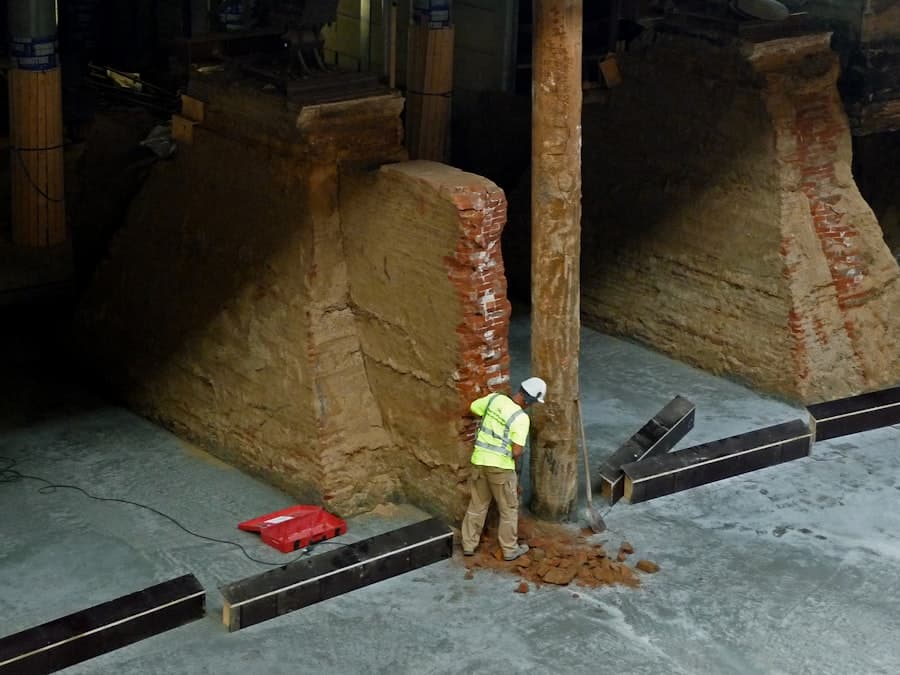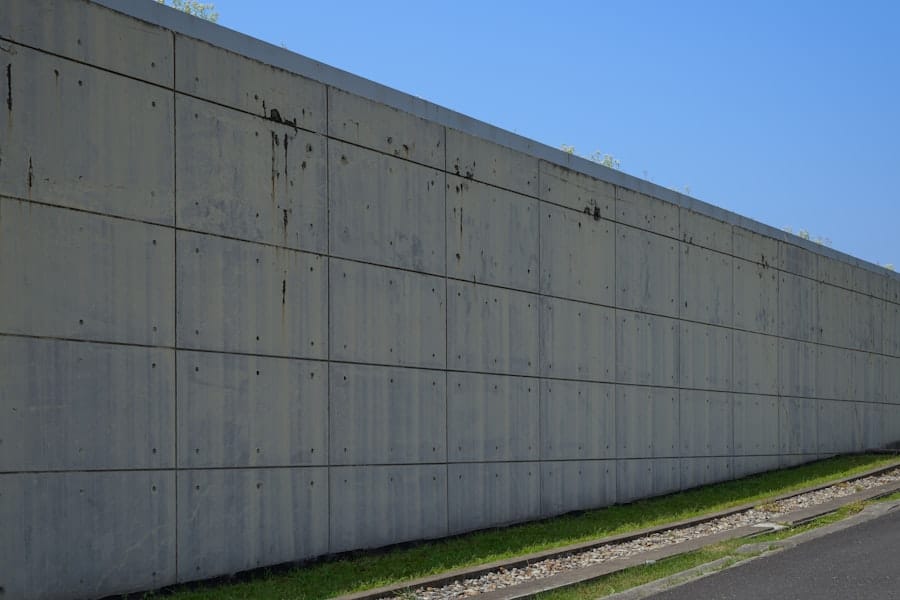Soil erosion and runoff are critical environmental issues that can significantly impact land quality and agricultural productivity. As you delve into this topic, it’s essential to recognize that soil erosion occurs when the top layer of soil is worn away by natural forces such as wind and water. This process can be exacerbated by human activities, including deforestation, overgrazing, and improper agricultural practices.
When soil is eroded, not only is the nutrient-rich topsoil lost, but the sediment can also pollute nearby water bodies, leading to a cascade of ecological problems. Runoff, on the other hand, refers to the water flow that occurs when excess rainwater or melted snow flows over the ground. This phenomenon can lead to further soil erosion as the moving water carries away soil particles.
Understanding the relationship between soil erosion and runoff is crucial for anyone looking to manage land effectively. By recognizing how these processes interact, you can take proactive steps to mitigate their effects and promote healthier ecosystems.
Key Takeaways
- Soil erosion and runoff can lead to loss of topsoil, water pollution, and damage to infrastructure.
- Assess the site for potential issues such as slope, soil type, and existing vegetation to determine erosion risk.
- Implement erosion control measures such as mulching, terracing, and silt fences to prevent soil erosion.
- Utilize natural landscaping solutions like native plants and grasses to stabilize soil and reduce erosion.
- Install retaining walls and terracing to manage runoff and prevent soil erosion on sloped areas.
Assessing the Site for Potential Issues
Understanding Site Characteristics
By understanding the unique characteristics of your site, you can identify areas that are particularly vulnerable to erosion and runoff. For instance, steep slopes or areas with loose, sandy soil that may require more attention than flatter regions with dense vegetation.
Considering Human Factors
In addition to physical characteristics, consider the human factors that may contribute to erosion. Are there any construction activities planned? Is there heavy foot traffic in certain areas? By taking stock of both natural and anthropogenic influences, you can develop a comprehensive understanding of potential erosion issues.
Laying the Foundation for Effective Erosion Control
This assessment will serve as a foundation for your subsequent planning and implementation of effective erosion control strategies.
Implementing Erosion Control Measures

Once you have assessed the site for potential issues, the next step is to implement effective erosion control measures. These measures can vary widely depending on the specific conditions of your site but often include techniques such as silt fencing, sediment basins, and erosion control blankets. Silt fencing can be particularly useful in preventing sediment from leaving a construction site during heavy rains, while sediment basins can capture runoff and allow sediment to settle before water is released downstream.
Another effective strategy is to create buffer zones with vegetation along waterways. These vegetated areas can absorb excess water and filter out pollutants before they reach streams or rivers. By combining various erosion control measures tailored to your site’s unique needs, you can create a robust system that minimizes soil loss and protects water quality.
Utilizing Natural Landscaping Solutions
Incorporating natural landscaping solutions into your erosion control strategy can yield significant benefits for both the environment and aesthetics. Native plants are particularly effective in stabilizing soil due to their deep root systems, which help bind the soil together and reduce erosion. Additionally, these plants are well-adapted to local conditions, requiring less maintenance and fewer resources than non-native species.
You might also consider using techniques such as contour planting or creating swales—shallow channels designed to direct water flow. These methods not only help manage runoff but also enhance the visual appeal of your landscape. By embracing natural landscaping solutions, you can create a sustainable environment that supports local wildlife while effectively controlling erosion.
Installing Retaining Walls and Terracing
For sites with significant elevation changes, installing retaining walls or terracing can be an effective way to combat soil erosion. Retaining walls act as barriers that hold back soil on slopes, preventing it from washing away during heavy rains. When designed correctly, these structures can also enhance the aesthetic appeal of your landscape while providing functional benefits.
Terracing involves creating flat areas on a slope to slow down water runoff and allow for better absorption into the soil. This method not only reduces erosion but also creates additional usable space for gardening or landscaping. By combining retaining walls with terracing techniques, you can create a multi-faceted approach to managing steep slopes while promoting soil stability.
Incorporating Proper Drainage Systems

Effective drainage systems are essential for managing runoff and preventing soil erosion. As you plan your drainage solutions, consider both surface and subsurface drainage options. Surface drainage involves directing water away from vulnerable areas through ditches or channels, while subsurface drainage utilizes pipes buried underground to remove excess water from the soil.
It’s crucial to ensure that your drainage systems are designed to handle heavy rainfall events without overwhelming nearby ecosystems. Properly designed drainage systems not only protect your land from erosion but also help maintain healthy soil moisture levels for plants. By incorporating these systems into your overall erosion control strategy, you can create a more resilient landscape.
Selecting the Right Plants and Groundcover
Choosing the right plants and groundcover is a vital component of any erosion control plan. Native plants are often the best choice because they are adapted to local conditions and require less maintenance than non-native species. Their root systems help stabilize the soil while providing habitat for local wildlife.
In addition to native plants, consider using groundcovers such as clover or creeping thyme. These low-growing plants spread quickly and form a dense mat that protects the soil from erosion while also suppressing weeds. By carefully selecting plants that thrive in your specific environment, you can create a lush landscape that effectively combats soil erosion.
Maintaining and Monitoring Soil Health
Maintaining healthy soil is essential for preventing erosion and promoting sustainable land use practices. Regular monitoring of soil health allows you to identify potential issues before they escalate into significant problems. This monitoring can include testing soil composition, checking for compaction, and assessing moisture levels.
Incorporating practices such as crop rotation, cover cropping, and organic amendments can enhance soil health over time. These practices not only improve nutrient availability but also promote biodiversity within the soil ecosystem. By prioritizing soil health in your land management strategy, you can create a more resilient landscape that is better equipped to withstand erosion.
Educating Clients on Sustainable Practices
If you work with clients in landscaping or land management, educating them about sustainable practices is crucial for long-term success. Many clients may not be aware of the impact their choices have on soil health and erosion rates. By providing information on sustainable landscaping techniques, you empower them to make informed decisions that benefit both their property and the environment.
Consider hosting workshops or providing informational materials that cover topics such as native plant selection, proper irrigation techniques, and the importance of maintaining healthy soil. By fostering a culture of sustainability among your clients, you contribute to broader efforts aimed at reducing soil erosion and promoting environmental stewardship.
Collaborating with Environmental Experts
Collaboration with environmental experts can enhance your understanding of soil erosion and runoff management strategies. These professionals bring valuable insights into best practices and innovative solutions tailored to specific environmental conditions. Whether you’re working with ecologists, hydrologists, or landscape architects, their expertise can help you develop more effective erosion control plans.
Engaging with experts also opens up opportunities for networking and knowledge sharing within the community. By collaborating on projects or initiatives focused on soil health and erosion prevention, you contribute to a collective effort aimed at protecting natural resources for future generations.
Adapting to Changing Weather Patterns
As climate change continues to influence weather patterns globally, adapting your erosion control strategies becomes increasingly important. You may find that traditional methods need to be adjusted in response to more frequent heavy rainfall events or prolonged droughts. Staying informed about climate trends in your area allows you to anticipate potential challenges and modify your approach accordingly.
Consider implementing flexible strategies that can be adjusted based on changing conditions. For example, incorporating drought-resistant plants into your landscaping can help maintain soil stability during dry spells while still providing aesthetic value. By remaining adaptable in your approach to erosion control, you position yourself—and your clients—for success in an ever-changing environment.
In conclusion, addressing soil erosion and runoff requires a multifaceted approach that combines assessment, planning, implementation, and ongoing education. By understanding these processes and employing effective strategies tailored to specific sites, you can contribute significantly to environmental health while enhancing the beauty and functionality of landscapes. Through collaboration with experts and a commitment to sustainable practices, you play an essential role in preserving our natural resources for future generations.
Landscaping services often face challenges related to soil erosion and runoff, which can have detrimental effects on the environment. One way to combat these issues is by implementing proper watering techniques, as discussed in this article. By ensuring that plants receive the right amount of water, landscaping services can help prevent erosion and runoff. Additionally, hiring a reputable landscaping company, such as the one in Corpus Christi, Texas mentioned in this article, can address common concerns and provide expert solutions to landscaping challenges.
FAQs
What is soil erosion and runoff?
Soil erosion is the process of the wearing away of the topsoil layer by natural forces such as water, wind, and ice. Runoff refers to the movement of water over the land surface and is a major cause of soil erosion.
How do landscaping services address soil erosion and runoff issues?
Landscaping services address soil erosion and runoff issues by implementing various erosion control measures such as installing retaining walls, creating swales and berms, planting ground cover, and using erosion control blankets.
What are some techniques used to prevent soil erosion and runoff?
Some techniques used to prevent soil erosion and runoff include terracing, mulching, planting trees and shrubs, creating rain gardens, and installing permeable paving.
Why is it important to address soil erosion and runoff issues in landscaping?
It is important to address soil erosion and runoff issues in landscaping to prevent loss of topsoil, protect water quality, maintain the stability of slopes, and preserve the overall health and integrity of the landscape.
